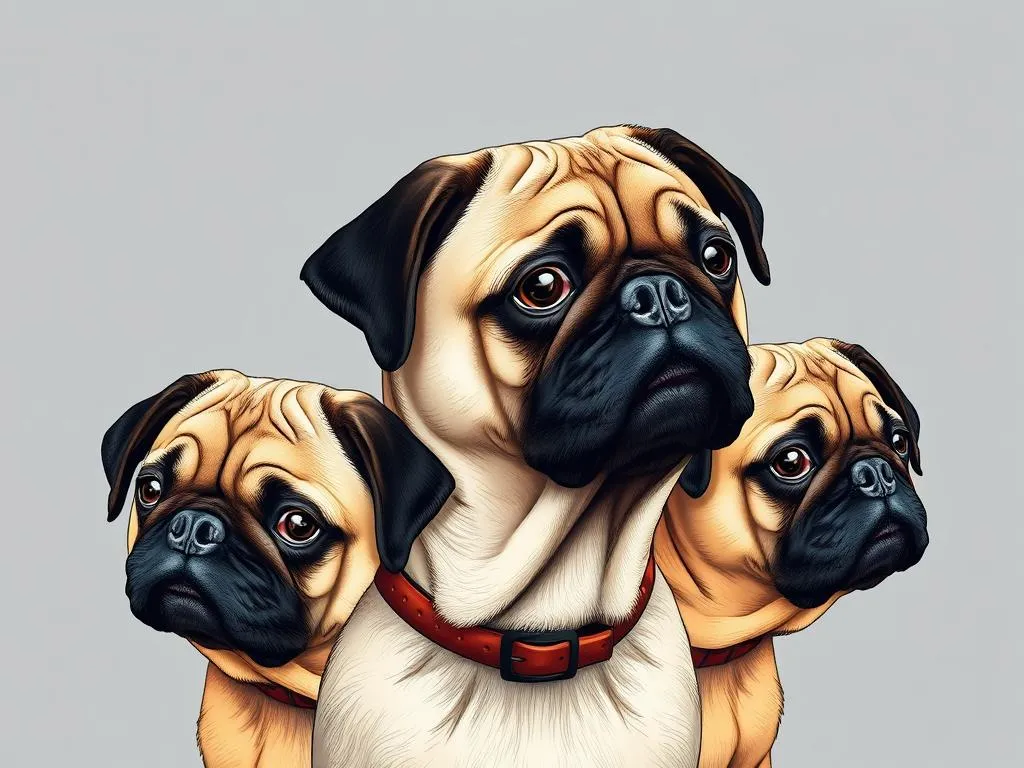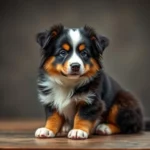
Pugs are one of the most beloved dog breeds worldwide, known for their charming personalities and distinctive looks. Their compact size, wrinkled faces, and curly tails make them instantly recognizable. However, beyond their endearing appearance, pug colors and patterns play a significant role in the breed’s overall appeal and popularity. This article delves into the various pug colors and patterns, their significance, and how they influence the perception of this delightful breed.
Understanding Pug Breeds
History of Pugs
Originating from ancient China, pugs have a rich history that dates back over 2,000 years. They were bred as companions for royalty and were often pampered by emperors, which contributed to their luxurious lifestyle. As the breed spread to Europe through trade routes, their popularity soared, particularly in the Netherlands and England. Over time, various pug colors emerged, influenced by breeding practices and the preferences of dog enthusiasts.
Characteristics of Pugs
Pugs are small, sturdy dogs with a well-defined structure. Weighing between 14 to 18 pounds, they are known for their short snouts, heavy-set bodies, and distinctive wrinkled faces. Their eyes are large and expressive, often reflecting their playful and affectionate nature. Pugs are also renowned for their friendly and sociable temperament, making them excellent family pets.
Common Pug Colors
Fawn
The fawn color is perhaps the most iconic representation of the pug breed. Fawn pugs have a light tan coat that can vary in shades from cream to a deeper, richer tan. The contrast between their fawn bodies and their dark facial masks creates a distinct look that many find appealing. This color is highly popular among pug owners, often associated with the breed’s playful and charming personality.
Black
Black pugs are striking and elegant, with their glossy, jet-black coats that stand out in any setting. While they share the same physical characteristics as fawn pugs, their care and maintenance can differ slightly due to their darker pigmentation. Black pugs tend to be less common, making them a sought-after choice for many pug enthusiasts. Their rarity often leads to higher demand, and potential owners may find themselves on waiting lists for these beautiful dogs.
White
The white pug, though often desired for its unique appearance, has sparked some controversy within the breed community. While not officially recognized as a standard color by many kennel clubs, white pugs do exist and are cherished by their owners. However, this color can be linked to certain health issues, such as skin problems and sensitivity to sunlight, which are critical considerations for prospective owners.
Silver
Silver pugs exhibit a beautiful blend of gray and fawn shades, creating a unique and eye-catching appearance. While similar to fawn pugs, silver pugs have a distinctive sheen that sets them apart. This color is not as commonly seen, but those who own silver pugs often rave about their elegant look and charming personalities.
Other Rare Colors
In addition to the more common colors, pugs can also come in rare shades that include:
- Chocolate: A rich brown color that is increasingly sought after.
- Blue: A unique and striking hue that is highly rare and often commands high prices.
- Apricot: A warm, peachy tone that is a variation of the fawn color.
These rare colors can significantly influence a pug’s desirability and market value, with many enthusiasts willing to pay a premium for these unique coat colors.
Pug Patterns
Solid Colors
Solid-colored pugs are those that exhibit a uniform coat without any patterns. They can be either fawn or black, and their simplicity often highlights the pug’s adorable features. Solid colors are often preferred for those looking for the quintessential pug look, as they emphasize the breed’s charming characteristics.
Brindle
The brindle pattern is characterized by a mix of dark and light stripes that create a unique appearance. Brindle pugs can be particularly captivating, as their coats feature a blend of colors that can vary in intensity. However, breeding for this pattern poses challenges, as not all pugs carry the genes required to produce brindle offspring.
Masked Pugs
Masked pugs possess a distinctive mask pattern that typically features a darker shade around their face and a lighter body. This pattern adds an element of charm and character to the pug’s appearance, often making them stand out. Variations in masks can occur, and some pugs may have more defined or pronounced masks than others.
Ticked
Ticked pugs feature small spots of color dispersed throughout their coat, often resembling freckles. This pattern occurs due to specific genetic factors, and while not as common as solid or brindle patterns, ticked pugs have a unique charm that appeals to many dog lovers. Their distinctive look adds to the diversity of the breed.
Factors Influencing Pug Colors and Patterns
Genetics
The genetics behind pug colors and patterns is a fascinating aspect of understanding this breed. Coloration is determined by specific genes, and the combination of these genes can lead to a variety of appearances. Breeders often select for particular traits, which can influence not only the color but also the overall health and temperament of the puppies.
Breeding Practices
Ethical breeding practices are vital in maintaining the health of the pug breed. Breeding for specific colors can sometimes lead to health issues, especially if breeders prioritize aesthetics over the well-being of the animals. Responsible breeders focus on the health of their pugs, ensuring that they adhere to breed standards while also producing dogs that are less prone to genetic disorders.
Health Implications Linked to Color
Certain pug colors can be associated with specific health concerns. For instance, white pugs may experience skin issues due to lack of pigmentation, while rare colors like blue and chocolate can sometimes be linked to genetic anomalies. Prospective pug owners should be aware of these potential health implications and choose breeders who prioritize health and ethical practices in their breeding programs.
Choosing a Pug Based on Color and Pattern
Personal Preferences
When selecting a pug, personal preferences regarding color and pattern can play a significant role. Some owners may have a special affinity for fawn pugs due to their traditional appearance, while others may be drawn to the rarity of a chocolate or blue pug. Cultural and social influences can also shape these preferences, with different communities having varying perceptions of certain colors.
Practical Considerations
Beyond personal preference, practical considerations should also come into play when choosing a pug. For instance, lighter colors may show dirt more easily, requiring more frequent grooming. Additionally, darker pugs can be more prone to overheating, especially in hot climates, which is an important factor for potential pug owners to consider.
Adoption and Rescue Options
Regardless of color, adopting a pug from a rescue organization can provide a loving home for dogs in need. Many pugs, regardless of their colors and patterns, are looking for forever homes. Adopting ensures that these wonderful dogs find loving families, and it allows owners to appreciate the unique personalities of pugs beyond their appearances.
Conclusion
The world of pug colors and patterns is as diverse as the breed itself. Each color and pattern brings its own charm and appeal, contributing to the overall affection that people have for pugs. While it’s easy to get caught up in the aesthetic appeal of a pug’s coat, it’s essential to appreciate them for their loving nature and delightful personalities. Whether you prefer a classic fawn or a rare blue, every pug has a unique story to tell and a heart full of love to share.
FAQs
What are the most common pug colors?
The most common pug colors are fawn and black. Fawn pugs are particularly popular due to their traditional appearance.
Do colors affect a pug’s personality?
No, a pug’s color does not influence its personality. All pugs, regardless of color, tend to exhibit similar temperamental traits, such as being friendly, loving, and playful.
Are there health issues associated with specific pug colors?
Yes, certain colors can be linked to health issues. For example, white pugs may be more susceptible to skin problems. It’s important to choose a responsible breeder who prioritizes health.
What is the rarest color of pug?
Some of the rarest pug colors include blue and chocolate. These colors can be highly sought after and often come with a higher price tag.
Can I adopt a pug of any color?
Yes! Pugs of all colors and patterns are available for adoption. It’s important to focus on providing a loving home rather than just the color of the coat.









